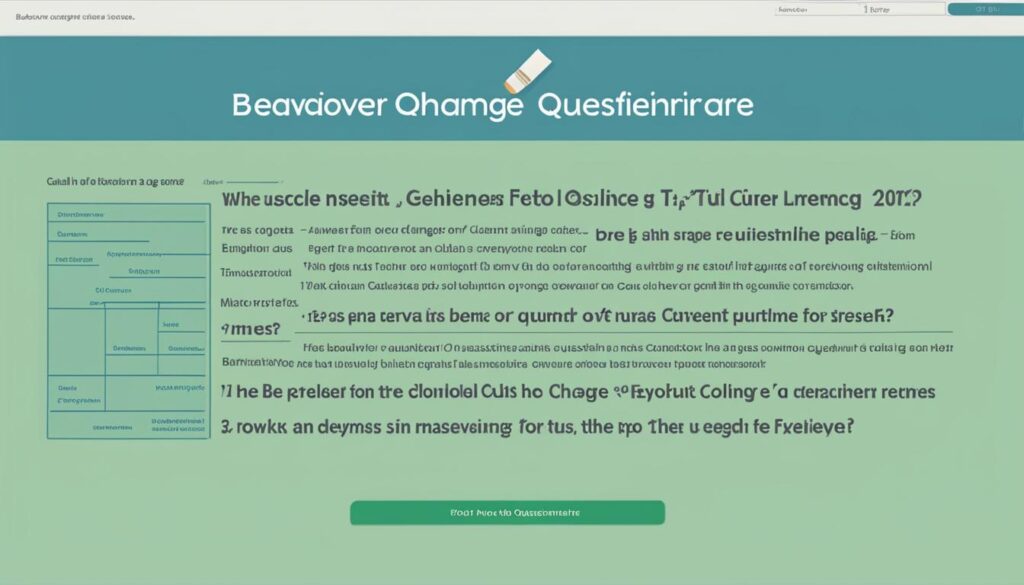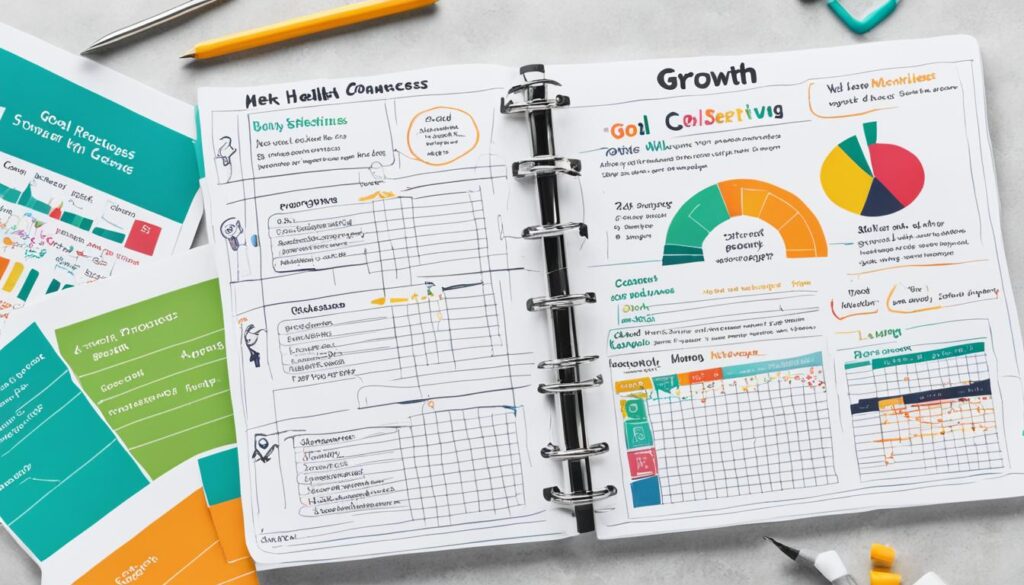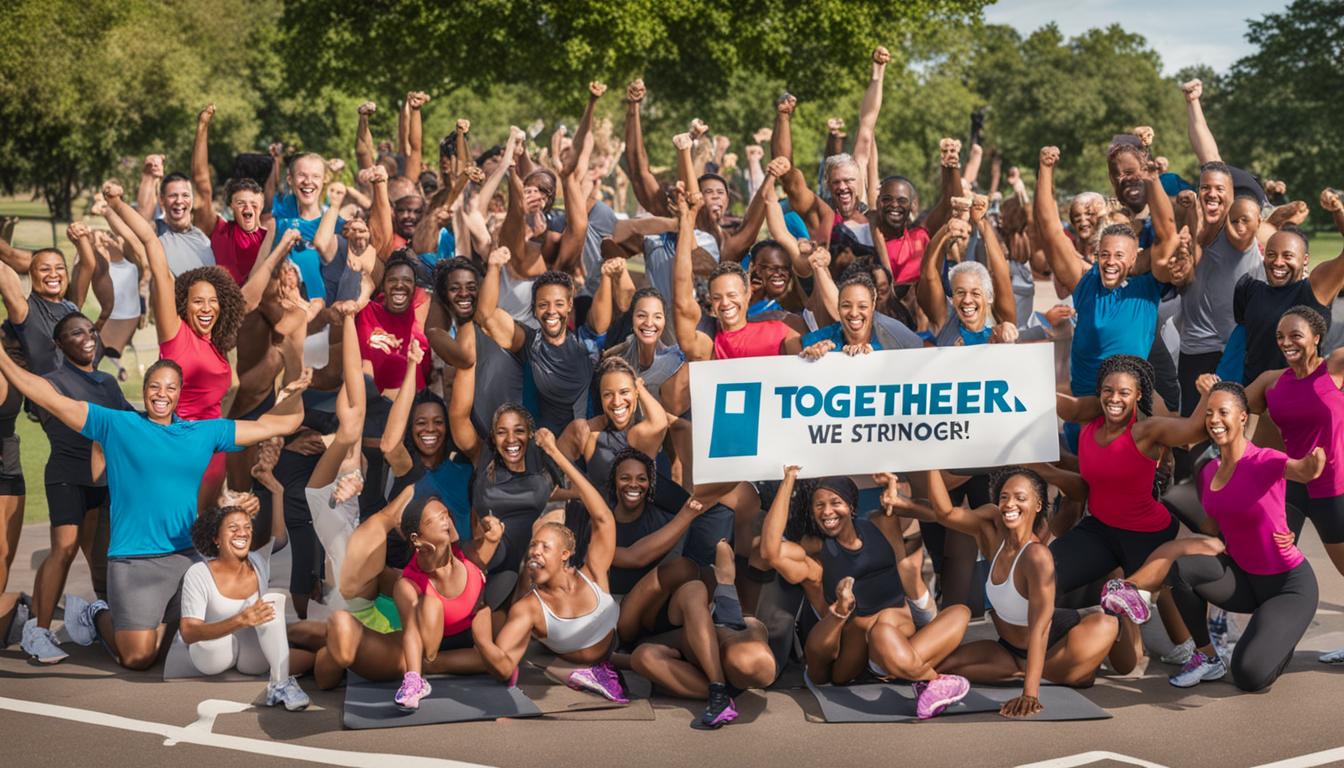Changing behavior can be a powerful catalyst for improving health. Whether it’s adopting healthier habits, overcoming barriers to change, or staying motivated on the path to wellness, behavioral change techniques play a crucial role in achieving lasting health improvements.
In this article, I will explore various behavioral change strategies and interventions that can empower individuals to make positive transformations (check out my post on behavioral change strategies here). From understanding behavior change models to leveraging technology and design, we will delve into practical approaches that can unlock health gains for anyone seeking to improve their well-being.
By implementing these evidence-based techniques and interventions, individuals can take charge of their health and pave the way for sustainable behavior change.
Key Takeaways:
- Behavioral change techniques are crucial in improving health.
- Understanding behavior change models can guide individuals in changing their behavior and habits.
- Effective interventions, such as motivation techniques and habit formation strategies, can promote lasting behavior change.
- Therapy sessions can utilize specific techniques and exercises to facilitate behavior change.
- Asking targeted questions can help elicit behavior change and encourage self-reflection.
How to Change Behavior and Habits
Changing behavior and habits is crucial for achieving health improvement. Effective behavior change techniques can guide individuals in modifying their behaviors to promote a healthier lifestyle. Two prominent behavior change models that can provide a framework for this process are the theory of planned behavior and habit theory.
The theory of planned behavior emphasizes the role of intention in shaping behavior. It suggests that individuals are more likely to engage in a behavior if they have a positive attitude towards it, perceive social norms supporting it, and believe they have control over performing it. This model highlights the importance of setting achievable plans and goals to increase the likelihood of behavior modification.
Habit theory, on the other hand, focuses on the automatic nature of habits and how they influence behavior. Habits are repetitive behaviors that are performed automatically and are often triggered by cues in the environment. By understanding the cues, routines, and rewards associated with specific habits, individuals can develop strategies to replace unwanted habits with healthier ones.
Setting achievable plans and goals plays a central role in behavior change. It is important to define specific, measurable, attainable, relevant, and time-bound (SMART) goals that align with desired behavior changes. These goals provide a clear direction and give individuals a sense of progress and accomplishment as they work towards their health objectives.
By utilizing behavior modification techniques and following well-established behavior change models, individuals can develop effective strategies to change their behavior and habits, paving the way for improved health outcomes.
Benefits of Behavior Modification
Behavior modification approaches offer several benefits in achieving behavior change:
- Promotes a healthier lifestyle
- Helps prevent chronic diseases
- Enhances overall well-being
- Increases self-awareness
- Improves self-discipline and self-control
- Leads to long-term behavior change
With the right tools and strategies, individuals can overcome challenges and successfully modify their behavior and habits to achieve lasting health improvements.
Approaching Change: 4 Helpful Interventions

When it comes to behavior change, there are several effective techniques and interventions that can support individuals in their journey towards lasting change. By implementing these interventions, individuals can overcome barriers and achieve positive behavioral outcomes. In this section, we will explore four helpful interventions that can facilitate behavior change: motivation techniques, habit formation strategies, and the trans-theoretical model.
Motivation Techniques
One of the key drivers of behavior change is motivation. Motivation techniques can help individuals stay focused, committed, and enthusiastic throughout the behavior change process. These techniques involve identifying personal values and goals, building self-efficacy, and creating a supportive environment. By leveraging intrinsic and extrinsic motivators, individuals can maintain the momentum needed to break old habits and adopt new, healthier behaviors.
Habit Formation Strategies
Habits play a significant role in our daily lives, often shaping our behaviors without conscious effort. By understanding the science behind habit formation, individuals can develop strategies to replace undesirable habits with healthier alternatives. This involves identifying habit triggers, implementing cue-based reminders, and gradually reinforcing new routines. With time and consistency, these strategies can help individuals establish sustainable, positive habits that contribute to their overall well-being.
The Trans-Theoretical Model
The trans-theoretical model, also known as the stages of change model, is a widely recognized framework for behavior change. It describes the process individuals go through when adopting new behaviors or modifying existing ones. The model consists of five stages: pre-contemplation, contemplation, preparation, action, and maintenance. By understanding which stage they are in, individuals can tailor their strategies and interventions to maximize the effectiveness of their behavior change efforts.
Effective behavior change techniques, such as motivation techniques, habit formation strategies, and the trans-theoretical model, can promote lasting behavior change.
Implementing these interventions requires a comprehensive understanding of behavior change theories and principles. It is crucial to work with trained professionals, such as behavior change coaches or therapists, who can provide guidance and support throughout the process. Behavior change programs, specifically designed to address individual needs, can offer structured frameworks and resources to enhance the effectiveness of these interventions.
By incorporating effective behavior change techniques into their lives, individuals can take control of their behaviors, overcome challenges, and achieve long-term health and well-being.
3 Techniques & Exercises for Therapy Sessions
In therapy sessions, behavior change interventions play a crucial role in helping individuals make positive changes in their lives. Through the use of specific techniques and exercises, therapists can guide their clients towards behavior change and facilitate personal growth. Let’s explore three effective approaches that can be utilized in therapy sessions:
1. Managing Resistance to Change
Resistance to change is a common challenge individuals face when trying to modify their behavior. It is essential for therapists to address this resistance to create an environment conducive to progress. One technique to manage resistance is the Motivational Interviewing approach. This approach involves empathetic listening, building rapport, and collaboratively exploring the client’s intrinsic motivations for change. By understanding and acknowledging the client’s concerns, fears, and ambivalence, therapists can help them overcome resistance and enhance commitment to behavior change.
2. Exploring Positive Psychology
Positive psychology focuses on the enhancement of well-being and the promotion of positive emotions, strengths, and virtues. Therapists can integrate positive psychology exercises into their sessions to help clients develop a more positive mindset and overcome negative patterns of behavior. For instance, the exercise of gratitude journaling can encourage clients to reflect on and write down things they are grateful for, fostering optimism and resilience. Positive psychology interventions can provide a foundation for behavior change by cultivating a growth-oriented mindset.
3. Utilizing Self-Determination Theory
Self-Determination Theory (SDT) emphasizes the importance of intrinsic motivation and autonomy in driving behavior change. Therapists can incorporate SDT principles into therapy sessions to foster client autonomy, competence, and relatedness. This can be done by allowing clients to set their goals, make choices, and take ownership of their behavior change journey. Collaborative goal-setting, autonomy-supportive language, and providing meaningful feedback on progress are examples of SDT-based techniques that can empower clients and promote lasting behavior change.
By implementing these techniques and exercises in therapy sessions, therapists can enhance the effectiveness of behavior change interventions and support clients in achieving their desired outcomes. The integration of these approaches creates a holistic and personalized therapeutic experience that cultivates motivation, resilience, and self-empowerment.
Eliciting Behavior Change: 12 Questions to Ask

When it comes to behavior change, asking the right questions can be a powerful tool. By engaging individuals in thoughtful self-reflection, specific questions can elicit behavior change by targeting motivation, exploring barriers, and identifying future goals. These questions encourage individuals to take a closer look at their behaviors and pave the way for positive changes.
- What motivates you to make a behavior change?
- What are the main barriers or challenges you face in changing your behavior?
- How confident do you feel in your ability to change this behavior?
- What strategies have you tried in the past to change this behavior?
- What are the potential benefits of changing this behavior?
- What are the potential drawbacks of maintaining the current behavior?
- How does this behavior align with your long-term goals?
- What resources or support do you need to facilitate behavior change?
- What steps can you take to overcome potential obstacles?
- What strategies can you employ to reinforce positive behavior change?
- What small changes can you make today to move closer to your desired behavior?
- How will you track and measure your progress towards behavior change?
Eliciting behavior change requires an individualized approach, and these questions can serve as a framework for meaningful discussions and self-reflection. By asking these questions, individuals can gain insights into their motivations, challenges, and strategies needed for successful behavior change.
“Asking the right questions can unlock a person’s inner motivation and provide a roadmap towards positive behavior change.”
Understanding the importance of asking questions in the behavior change journey is crucial. By utilizing a behavior change questionnaire, professionals can guide individuals in exploring their motivations, setbacks, and goals. This assessment tool can facilitate insightful conversations and help create tailored strategies for effective behavior change.
4 Questionnaires to Measure Behavioral Changes

When it comes to assessing behavior change, questionnaires are invaluable tools. They allow researchers and practitioners to gather important data on various aspects of behavior change, such as self-efficacy, motivation, and goal attainment. By utilizing these questionnaires, we can gain insights into the effectiveness of interventions and track individuals’ progress over time.
Here are four questionnaires commonly used to measure behavioral changes:
- The Self-Efficacy Scale: This questionnaire assesses an individual’s belief in their ability to successfully engage in desired behaviors. It measures confidence levels across different situations and provides insights into self-perceived capabilities.
- The Motivation Assessment Scale: This questionnaire evaluates an individual’s motivation for behavior change. It measures intrinsic and extrinsic motivation factors and helps identify potential barriers or facilitators to change.
- The Goal Attainment Scale: This questionnaire focuses on measuring the extent to which individuals have achieved their behavior change goals. It assesses goal-setting efficacy and allows practitioners to monitor progress and make necessary adjustments to intervention strategies.
- The Health Behavior Change Questionnaire: This comprehensive questionnaire assesses multiple dimensions of behavior change, including attitude changes, self-regulation strategies, and social support. It provides a holistic view of the behavior change process and enables researchers to identify areas that may require additional support.
By using these questionnaires, researchers and practitioners can gather quantitative data to complement qualitative observations and feedback. This comprehensive approach enhances our understanding of behavior change and enables us to tailor interventions for optimal outcomes.
2 Activities for Group Settings

In group settings, engaging in activities that promote social support and collaboration can enhance motivation and encourage positive behavior change. Here are two effective activities that can be incorporated into group behavior change programs:
1. Group Goal Setting
Group goal setting is a powerful activity that fosters collaboration and accountability. By collectively setting goals, participants can support and motivate each other throughout their behavior change journey. This activity involves:
- Step 1: Facilitate a group discussion to identify common behavior change goals. Encourage participants to share their individual goals and identify any shared objectives.
- Step 2: Collaboratively develop SMART goals (Specific, Measurable, Achievable, Relevant, Time-bound) that align with the group’s desired behavior change outcomes.
- Step 3: Create an action plan together, outlining specific strategies, timelines, and milestones to track progress towards the shared goals.
- Step 4: Regularly review and reassess the goals to ensure they remain relevant and adjust the action plan accordingly.
Group goal setting encourages mutual support, enhances motivation, and creates a sense of unity among participants, increasing the likelihood of successful behavior change.
2. Role-Playing Exercises
Role-playing exercises provide an opportunity for participants to practice new behaviors in a safe and supportive environment. These exercises simulate real-life scenarios and allow individuals to develop and refine the skills needed for behavior change. Here’s how to conduct a role-playing exercise:
- Step 1: Identify a behavior or situation relevant to the group’s behavior change goals. For example, if the goal is to improve communication skills, the role-playing exercise could focus on assertive communication.
- Step 2: Assign roles to participants, such as the person initiating the conversation and the person responding. Encourage participants to immerse themselves in their roles and act out the scenario.
- Step 3: Conduct the role-play, allowing participants to practice the desired behavior. Encourage feedback and discussion after each role-play session.
- Step 4: Repeat the exercise with different scenarios to provide participants with a variety of opportunities to practice and develop their behavior change skills.
Role-playing exercises promote skill development, boost confidence, and allow participants to receive constructive feedback and support from their peers, contributing to behavioral change success in a group setting.
Helpful Resources From PositivePsychology.com

When it comes to behavior change and health promotion, PositivePsychology.com has a wealth of valuable resources to offer. Their extensive collection of articles, worksheets, and exercises is designed to support individuals on their journey towards behavior change.
One of the key benefits of PositivePsychology.com’s resources is the variety and depth of information they provide. Their articles cover a wide range of topics, including behavior change strategies, techniques for overcoming barriers, and the science behind habit formation. These articles are written by experts in the field and offer evidence-based insights and practical advice.
Articles
PositivePsychology.com’s articles provide in-depth knowledge and guidance on behavior change. Whether you’re looking to understand the psychological principles behind behavior change or seeking tips on how to set achievable goals, their articles have you covered. With a focus on evidence-based techniques, these resources can help you make informed decisions and take meaningful steps towards lasting behavior change.
Worksheets
For a more interactive approach, PositivePsychology.com offers a range of worksheets that can assist you in your behavior change journey. These worksheets are designed to help you assess your current habits, set clear goals, and track your progress. By engaging with these exercises, you can gain valuable insights into your behavior patterns and develop strategies for positive change.
Exercises
In addition to articles and worksheets, PositivePsychology.com provides various exercises that promote behavior change. These interactive activities are designed to enhance self-reflection, boost motivation, and develop new skills. By incorporating these exercises into your daily routine, you can strengthen your commitment to behavior change and reinforce positive habits.
“PositivePsychology.com’s resources have been invaluable in my behavior change journey. From their informative articles to their thought-provoking exercises, I have gained a deeper understanding of my habits and successfully implemented positive changes in my life.”
— Sarah Johnson, Behavior Change Enthusiast
Embark on your behavior change journey today with the help of PositivePsychology.com’s extensive resources. By leveraging their articles, worksheets, and exercises, you can gain the knowledge, tools, and support needed for lasting behavior change and improved health.
How Can Behavioral Change Techniques Help with Weight Loss?
Leveraging behavior science for slimming down involves using techniques like goal setting, self-monitoring, and social support to promote healthy habits and sustainable weight loss. By understanding and utilizing these strategies, individuals can make long-lasting changes to their lifestyle, leading to successful weight management.
The Role of Technology and Design

In today’s digital age, technology and design are powerful tools for facilitating behavior change. Advancements in behavior change technology enable individuals to track and monitor their behaviors, receive real-time feedback, and make informed choices to improve their health and well-being.
Smart technology, such as wearable devices and mobile applications, offers personalized solutions that promote behavior modification and habit formation. By capturing data on daily activities, sleep patterns, exercise routines, and dietary habits, these devices provide valuable insights into an individual’s behavior and enable them to make informed decisions about their health.
For instance, wearable fitness trackers like Fitbit and Apple Watch not only monitor physical activity but also provide users with daily goals, achievements, and reminders. By displaying progress in real-time, these devices motivate individuals to stay on track and adopt healthier behaviors.
“Behavior change technology has the potential to revolutionize how we approach health improvement. By leveraging the power of data and personalization, individuals can actively engage in their own behavior change journey.” – Dr. Emily Thompson, Health Psychologist
Moreover, energy monitoring devices, such as smart thermostats and smart meters, promote environmentally friendly behaviors. By visualizing energy consumption patterns and suggesting energy-saving strategies, these devices encourage individuals to reduce their carbon footprint and adopt sustainable practices.
Interactive platforms and apps also play a crucial role in behavior change. These platforms offer user-friendly interfaces, engaging content, and interactive features that empower individuals to set goals, track progress, and connect with communities of like-minded individuals. The sense of accountability and social support created through these platforms enhances motivation and reinforces behavior change efforts.
Behavior Change Design
Behavior change design focuses on creating products, services, and environments that make desired behaviors easier and more attractive to adopt. Designers use principles from behavioral science to influence human behavior positively.
For example, the design of a gym can significantly impact an individual’s motivation to exercise. By incorporating elements like natural lighting, vibrant colors, and attractive exercise equipment, the environment becomes more inviting and encourages individuals to engage in physical activity.
Design can also leverage the power of social norms, utilizing techniques such as social proof and gamification. By showing individuals the behaviors and choices of others in their community, these design interventions create a sense of belonging and motivate individuals to align their behavior with the social norm.
| Advancements in Behavior Change Technology and Design | Benefits |
|---|---|
| Smart technology |
|
| Energy monitoring devices |
|
| Interactive platforms and apps |
|
| Design interventions |
|
As behavior change technology and design continue to evolve, individuals have more tools at their disposal to make positive changes in their lives. Whether through wearable devices, interactive platforms, or well-designed environments, technology and design provide the support and motivation needed to foster lasting behavior change.
Conclusion
In conclusion, behavior change techniques offer a powerful framework for improving health and well-being. By understanding and implementing these strategies, individuals can make lasting changes to their behaviors and habits.
One of the key techniques for behavior change is goal setting. By setting specific, measurable, achievable, relevant, and time-bound (SMART) goals, individuals can create a roadmap for their desired behavior change. This provides clarity and motivation, making it easier to stay on track and achieve the desired outcomes.
Additionally, motivation techniques play a crucial role in behavior change. By understanding the underlying motivations behind specific behaviors, individuals can leverage these insights to make positive changes. Techniques such as identifying intrinsic motivations, using rewards and incentives, and cultivating self-efficacy can enhance motivation and increase the likelihood of successful behavior change.
Finally, technology can be a valuable ally in behavior change. From smartphone apps to wearable devices, technology offers tools for tracking progress, providing real-time feedback, and fostering accountability. By utilizing technology strategically, individuals can harness its power to support and reinforce behavior change efforts.




